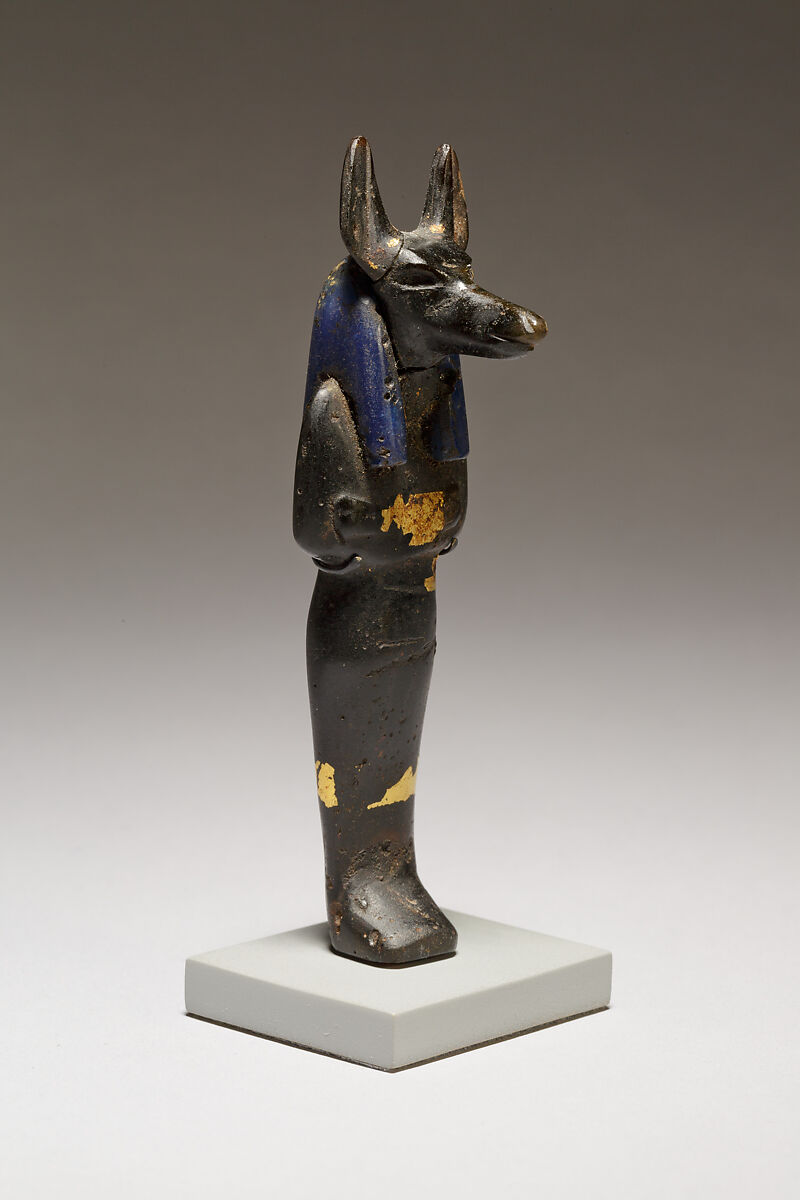Duamutef
Duamutef is an ancient Egyptian god, one of the four sons of Horus along with along with Hapy, Imsety, and Qebehsenuef.
Duamutef was associated with the protection of the stomach in mummification rituals. He is typically depicted with a jackal's head and is often represented on canopic jars, which held the embalmed organs of the deceased. He is associated with the east.
Name
The name Duamutef (dwꜣ-mwt.f) means "He who praises his mother."
Origin
Duamutef and the other sons of Horus appear in the earliest known writings concerning the ancient Egyptian religion, the Pyramid Texts. A passage in the later Coffin Texts from the Middle Kingdom (2055–1650 BC) says they are the offspring of the goddess Isis and a form of Horus known as Horus the Elder.
He, himself, was protected by the goddess Neith.
Canopic jar
Canopic jars were containers used by the ancient Egyptians during the mummification process, to store and preserve the viscera of their soul for the afterlife. Each of Horus's sons were responsible for protecting a particular organ, was himself protected by a companion goddess, and represented a cardinal direction.
Duamutef protected the stomach, which was extracted from the body, mummified separately, and placed inside his jar. In some later tombs, these jars were merely symbolic and did not contain the actual organs.
Role
Although Duamutef is most prominently found in funerary context as a canopic jar, he is possibly more closely associated with the Egyptian decans. Dutch Egyptologist Maarten Raven argues that the four sons originated as celestial deities, given that the Pyramid Texts frequently connect them with the sky and that Horus himself was a sky deity.
Geographically, both Hapy and Duamutef were linked with the Lower Egyptian city of Buto.
All four sons of Horus are connected with specific decans, ruling over them in some capacity, although the precise nature of their connection is not presently understood by scholars.
According to Cult of the Stars by occultist Travis McHenry, Duamutef rules over the following decans:
Protector of Sah
Some funerary texts state that the four sons of Horus were responsible for preventing Set, in his form as the foreleg of an ox, from reaching the decanal star Sah. Sah was often equated to Osiris, who Set was responsible for murdering.
One theory suggests the four sons of Horus are actually four stars in the constellation Ursa Major, which was known to the ancient Egyptians as msxtyw, the Foreleg of Set. This asterism contained a total of seven stars, and these four would have been located in the "meaty" part of the thigh. In an astronomical context, these four stars formed a border between the southern sky and the northern sky, thereby drawing a barrier between Set and Sah (the constellation Orion).
Astronomical identity
Although there is little consensus among Egyptologists concerning Egyptian astrology, it is likely that ancient Egyptian star priests identified Duamutef the star Merak (Beta Ursae Majoris) in the northern constellation of Ursa Major.
